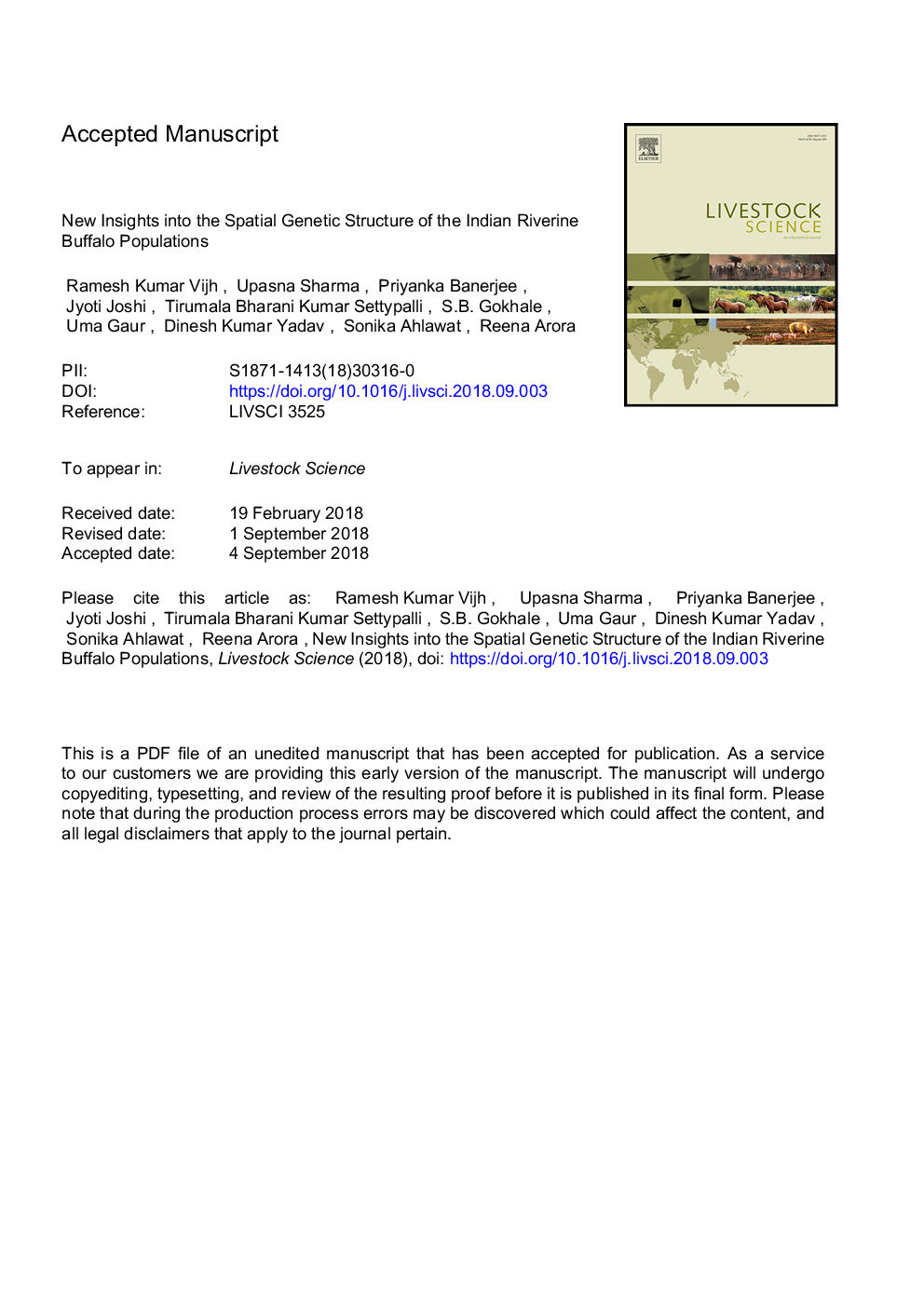| Article ID | Journal | Published Year | Pages | File Type |
|---|---|---|---|---|
| 9954651 | Livestock Science | 2018 | 21 Pages |
Abstract
Several programmes for the genetic improvement and conservation Indian buffalo breeds have been implemented by various agencies since 1970. These programmes may have shaped the present genetic diversity and thereby the evolutionary potential of buffalo populations across India. In this study, we attempted to provide an insight into the contemporary genetic structure of buffaloes by simultaneously analyzing the genetic and geospatial data. A battery of 100 microsatellite markers was genotyped across 1055 buffalo samples representing different geographical regions of the country. Bayesian and multivariate approaches were used for analyses. Although the clustering results from the different approaches were not convergent, these methods were able to identify sub-structuring within the UP buffalo population. In our study BAPS was able to distinguish most of the buffalo breeds with better spatial distribution. The genetic structuring detected in our study is mainly characterised by isolation by distance and also reflects the effect of improvement programmes. Our analysis suggested genetic connectivity of Murrah and Nili-Ravi with several buffalo breeds, as they have been used for breed improvement. The information may be useful in identifying ecologically distinct or connected populations for future improvement and conservation programmes.
Related Topics
Life Sciences
Agricultural and Biological Sciences
Animal Science and Zoology
Authors
Ramesh Kumar Vijh, Upasna Sharma, Priyanka Banerjee, Jyoti Joshi, Tirumala Bharani Kumar Settypalli, S.B. Gokhale, Uma Gaur, Dinesh Kumar Yadav, Sonika Ahlawat, Reena Arora,
